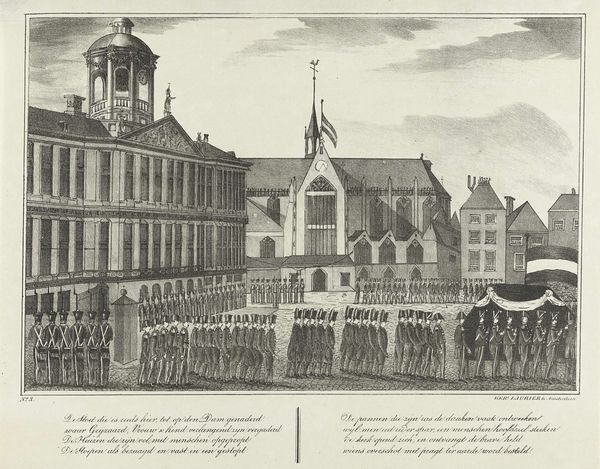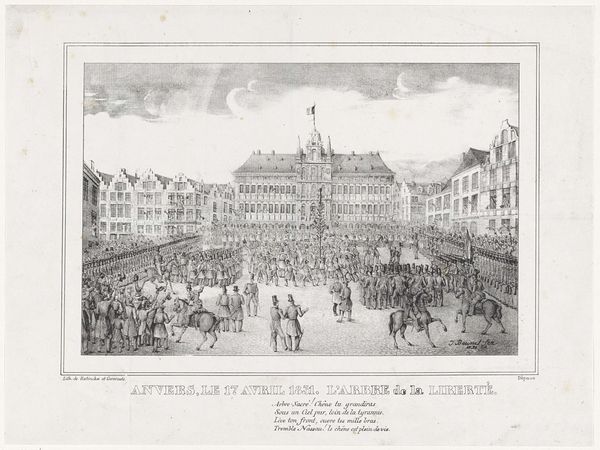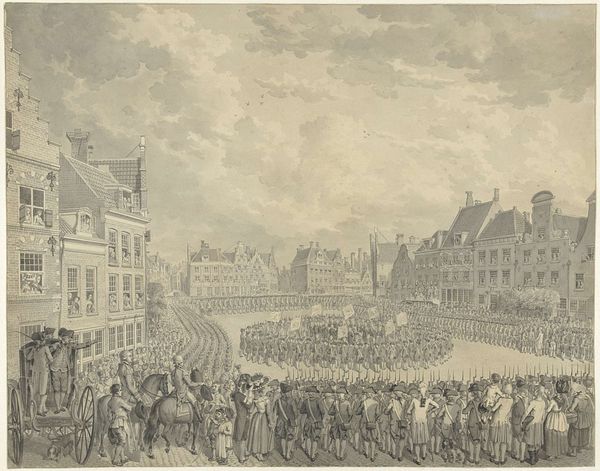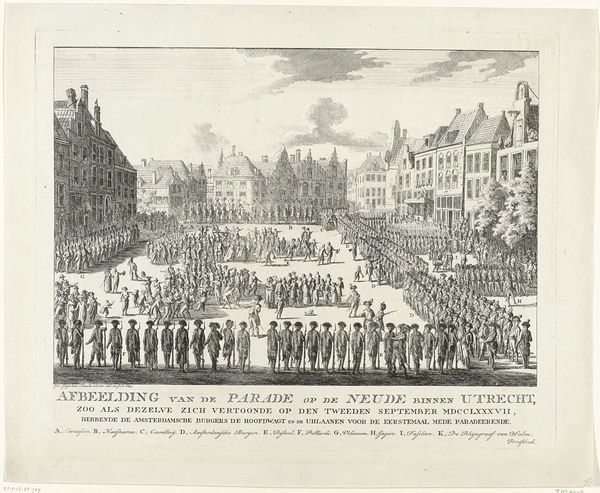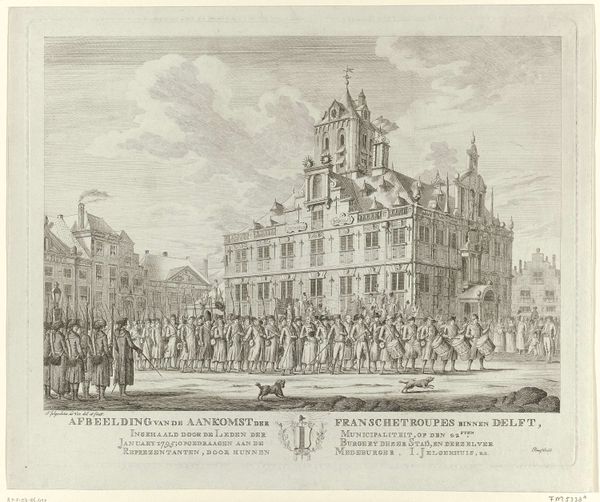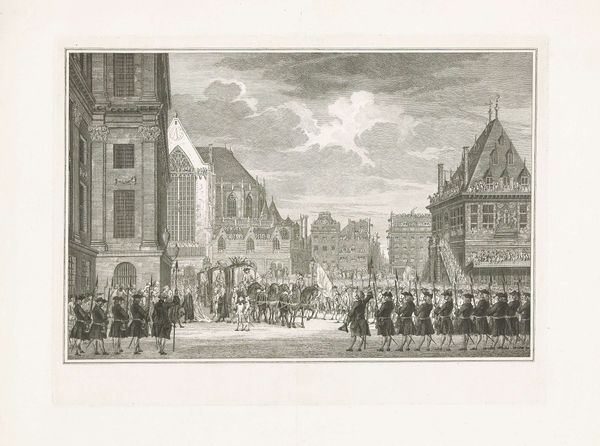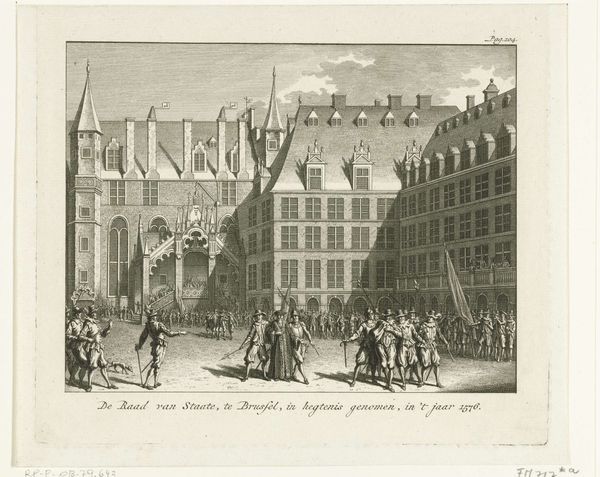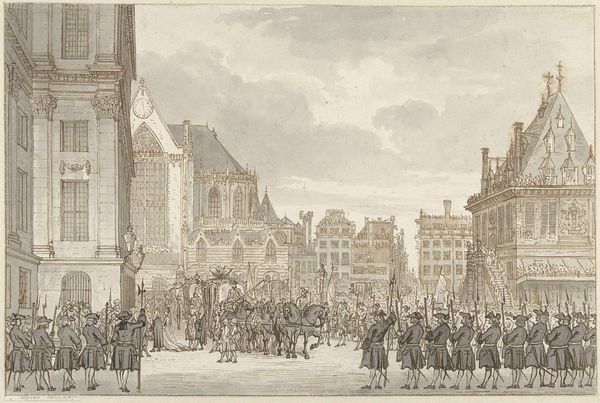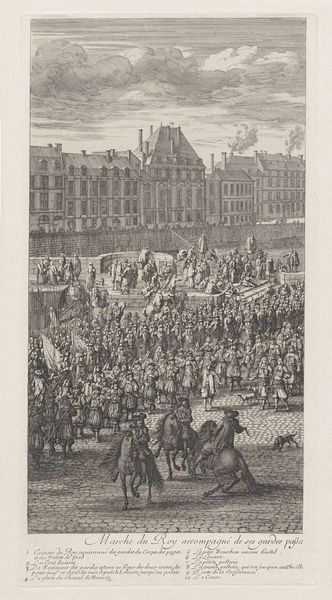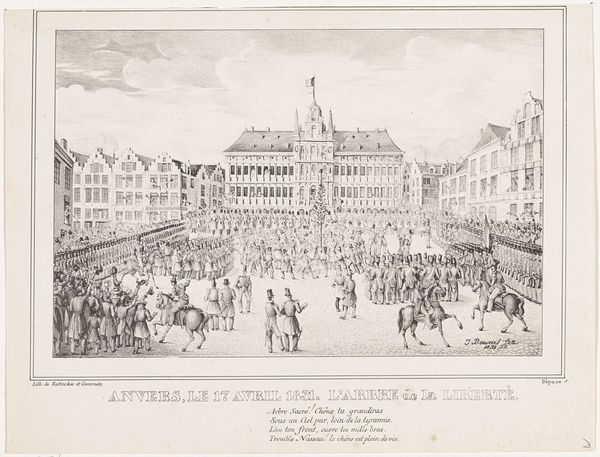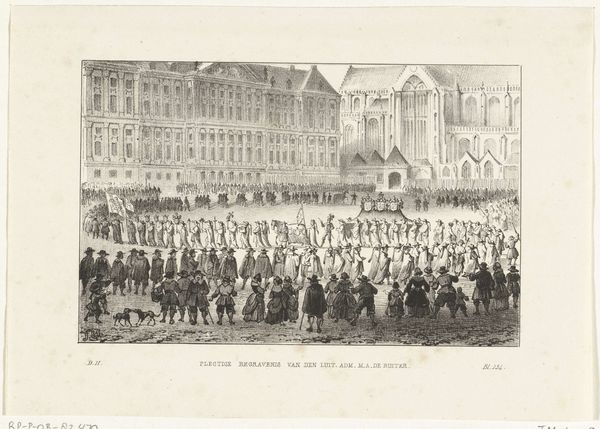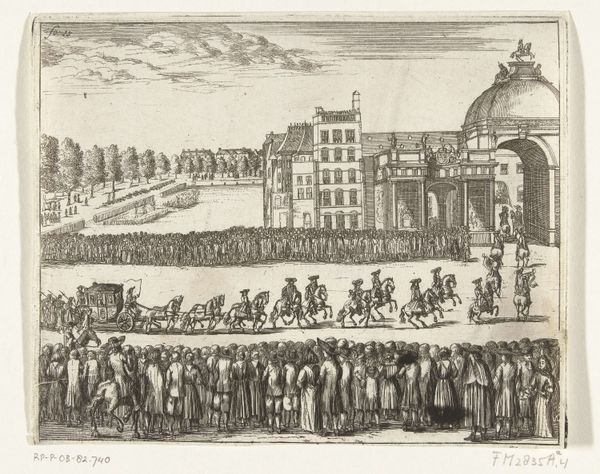
print, engraving
#
narrative-art
# print
#
romanticism
#
19th century
#
cityscape
#
history-painting
#
engraving
Dimensions: height 250 mm, width 354 mm
Copyright: Rijks Museum: Open Domain
Editor: Here we have "Begrafenis van Jan van Speijk," or "Funeral of Jan van Speijk," an engraving from 1832. The scene is dominated by architecture and marching figures. What strikes me is the incredible detail rendered with what seems like a very straightforward technique. What stands out to you? Curator: What stands out is the deliberate use of this relatively inexpensive and easily reproducible medium to disseminate a very specific narrative. This wasn’t painted for a wealthy patron to hang in a private collection. Engravings like this one were mass-produced. Think about the labour involved – the engraver meticulously copying an image, making it repeatable. Who was this image meant for, and what was it intended to achieve in society? Editor: So, it's less about the artistic flourish and more about the message being conveyed to a wider audience through a practical, almost utilitarian process? Curator: Precisely! Consider the social context: Who purchased this? Where would they display it? The engraving is itself a material object that played a role in constructing and reinforcing ideas about Dutch identity and heroism following Van Speijk's death. Did the choice of printmaking facilitate the message better than, say, a painting might have? Editor: That makes me think about how prints, being more accessible, shaped public opinion in ways paintings, reserved for the elite, couldn’t. Curator: Indeed. The materiality of the print itself becomes intertwined with its meaning, democratizing grief but maybe even encouraging nationalistic sentiment through mass consumption. Think about what this engraving *did,* how it circulated and functioned as a material object in the world. Editor: I never thought about prints in this way – as a form of mass communication, intricately connected to social and political forces. It really highlights the power of accessible art forms in shaping cultural narratives. Curator: And that’s the crux of it, isn’t it? Art isn’t just about aesthetics, it’s about material production, distribution, and social impact.
Comments
No comments
Be the first to comment and join the conversation on the ultimate creative platform.
